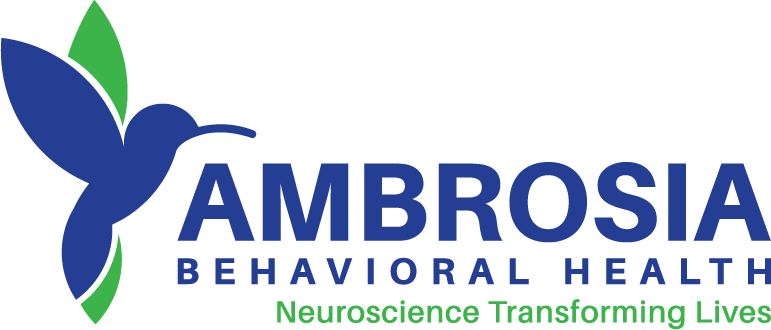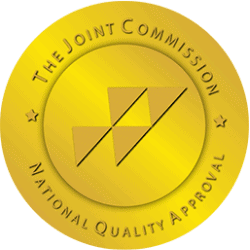Suboxone is a prescription drug used to treat dependence on opioid drugs. It is a controlled substance classified as a schedule three (III) prescription drug accepted for medical use but may cause physical or psychological dependence and may be abused.
Buprenorphine and naloxone, when combined, reduce cravings for opioid addiction like heroin, codeine, fentanyl, and oxycodone and can also be used like Suboxone in drug addiction withdrawal. People being treated for opioid addiction are given Suboxone to help manage withdrawal while detoxing from opioids. Continued use of this medication controls cravings and withdrawals.
Uses and Administration
Suboxone is made up of 2 components, buprenorphine, and naloxone. Buprenorphine helps treat opioid drug dependence by reducing withdrawal symptoms and drug cravings. It is an opioid partial agonist-antagonist, making it less likely to cause a “high” than an opioid.
Naloxone, on the other hand, helps prevent abuse of the medication. This is classified as an opioid antagonist, which blocks the effects of opioid drugs.
The drug is administered sublingual or placed under the tongue between the gums and cheek. It comes as an oral fil that dissolves in the mouth and contains a combination of buprenorphine and naloxone.
Is Suboxone addictive?
Abuse is certainly possible. Suboxone prescription allows people to live without the withdrawal symptoms, which, in turn, makes them dependent on the drug.
It can be quite addictive, but the risk is less severe than opioid addiction. It’s not intensely sedative and is less likely to cause cravings. The ingredient Buprenorphine may cause some withdrawal symptoms like headaches, muscle pains, and nausea, but doctors gradually reduce patients’ dosage. Its ‘ceiling effect’ as opioid and larger and frequent doses, do not intensify its capability, thus not resulting in addiction disorder.
Symptoms of Suboxone abuse
Suboxone healing is a part of the treatment for a recovering opiate addict at a detoxification and rehab center. The drug potency is meant to ease the withdrawal symptoms from other opiate drugs such as heroin. However, there is still a lingering possibility of abusing Suboxone:
Signs of Suboxone abuse may include:
- drowsiness,
- confusion,
- slurred speech
- nausea
- Vomiting and
- Respiratory depression
Being a tricky medicine, Suboxone designs its world of harm. In certain conditions, the drug may cause respiratory conditions wherein patients stop breathing. That can cause brain damage, coma, and death.
Dangers of abuse
Its chemical makeup takes effect even up to 72 hours after a dose, which poses significant risks for uninformed patients. This fact makes patients susceptible to overdose when the body gives in.
Another danger of abuse is when it is taken without medical supervision, and it is made with other opiate medicines. The risks of continuous Suboxone use include:
- Difficulty sleeping and insomnia
- Decreased capacity for attention
- Blurry vision
- Constipation
- Dizziness or Fainting
- Hypotension
- Respiratory depression
Among other things, an overdose is also possible. Some symptoms of Suboxone overdose include:
- Tiredness / Extreme Sleepiness
- Recurrent loss of consciousness
- Slurred speech
- Difficulty breathing
- Extreme lack of coordination
Risks of Suboxone Use
Suboxone needs to be administered by medical professionals trained to catch adverse effects on a patient and discontinue use right away. The following are possible fatal reactions when using Suboxone without medical guidance. When experienced, it is best to call your doctor or local poison control right away.
Severe allergic reaction
Allergic reactions can occur with excessive use of Suboxone. Symptoms may include trouble breathing, skin rash or hives, and swelling of the lips, throat, and tongue.
Abuse and Dependence
With its opioid effects, suboxone dependence can cause drug-craving and drug-seeking dependence that leads to misuse. This can cause overdose leading to death. This is especially true if used with other opioids, alcohol, benzodiazepines (such as Ativan, Valium, or Xanax), and other drugs.
Breathing problems and coma
Taking high doses of Suboxone can cause breathing problems, coma, and death. It is more likely to occur in people who already have breathing problems, such as chronic obstructive pulmonary disease (COPD).
Hormone problems
Several weeks of Suboxone use may cause reduced cortisol hormone levels. This condition is called adrenal insufficiency. Symptoms of adrenal insufficiency include nausea, vomiting, diarrhea, loss of appetite, fatigue, weakness, dizziness, low blood pressure, and depression.
Severe withdrawal symptoms
Suboxone contains naloxone, which is an opioid antagonist that blocks the effects of opioid drugs. Using the Suboxone could cause withdrawal symptoms if taken while there are still other opioids in the system. The drug is supposed to be taken only after the opioid effects wear off, and withdrawal symptoms start.
Identifying, Recognizing and Helping Suboxone abusers
It is a well-known fact that intervention is a helping mechanism. The abuse of Suboxone needs immediate intervention, and from there, one can begin the process of healing. Abuse on opiate substances likely leads to addiction, and in the process, may have its adverse effects.
In extreme cases, professional intervention is recommended. Keep these tips in mind.
- Do not call them names, such as addicts, as this may accuse them as an abuser.
- Do not initiate the help you may want to happen. Motivate and state concerns.
- Maintain open connections, establish a strong foundation of friendship.
- Do not insist on the idea of the kind of help you are doing.
Withdrawal and Withdrawal Symptoms
While the Suboxone linger on the body system for quite some time, withdrawal can last for a month, and the first three days are the worst. Detoxification under professional care is very much needed.
Speaking of opiate withdrawals, the treatment’s rigors depends on the length the substance was abused and its strength. The longer the use, the more it brings a prolonged and more potent withdrawal.
Withdrawal Symptoms may include:
- Nausea and vomiting associated with indigestion
- Fever/chills and body aches
- Sweating, anxiety or depression
- Migraines and headaches
- Mood swings and irritability and feeling of lost identity
- Extreme craving for opiates
These symptoms are more likely to be worse if professional help is not given. Ambrosia Treatment Center comes with an effective detoxification process suited for every patient’s needs. A detoxification process is specially designed for every patient, which can effectively remove remnants of opiates from the body.
Ambrosia Treatment Center
Ambrosia Treatment Center, based in South Florida, offers several unique treatment processes for substance abuse and Mental Health.
The center is a haven for treating alcohol and substance abuse. It provides the combined, latest advancement addressing addiction and its treatment with concierge clinical care for healing and restoring lives and families. The Treatment Center offers the following services:
For Substance abuse
- Alcohol and antidepressants
- Cocaine and crack cocaine
- Benzodiazepines
- Heroin, opioids, methamphetamine
- Marijuana, synthetic marijuana, and inhalants
- Prescription drugs, sleeping pills, and painkillers
For Mental Health
- Bipolar Disorder
- Borderline personality disorder
- Depression and post-traumatic stress disorder
Addiction, and what is it?
Addiction is a dependence on any substance plus the inability to stop using it. It can also be the inability to stop engaging in drinking, gambling, and taking drugs.
These behavioral ways tend to lead to a chronic disease such as addiction. Dependence starts from voluntarily taking drugs, but soon enough comes the overuse of it, until such time that the user becomes uncontrollable.
Addiction and misuse issues are two different things. Addiction can be a perpetual or continuing use but less of the intention to stop using, thus the inability to cease taking it. While misuse is the excessive use of non-therapeutic drugs altering the body and mind functions
Who is Prone to Addiction?
The human mind is the most complex of all the body’s processes. All circuits connected to this complex system significantly affect each body part. Drug use dramatically affects the brain by releasing dopamine, causing joy and frenzy to a person.
Prolonged and continued use results in the brain to lessen the capacity to answer the body. The body now slowly develops tolerance until such time that a person needs to take more to gain more pleasure.
Prolonged use can lead to changes in a person’s brain chemical circuits and judgment, such as:
- Responsible decision making
- Stress management
- Conscious actions
- Behavior management
Although people who use drugs know it all, they continue to be on drugs, which is a common nature of a drug addict.
Does Personality Cause Drug Addiction?
The complexity of a person’s mind and behavior is boundless. Therefore, no one can tell or diagnose a distinct type bound to addiction. Clinical research and studies have considered but not limits the following factors for drug addictive behaviors:
- Gene scientists say that the probability of being addicted is more likely to develop in children whose parents are hooked.
- Environment and exposure. Some say that other factors are at play, such as friends you hang out with, education, social support, and the environment you grew up in. Exposure to these matters is essential.
- One may lead to another addiction. Some personality traits commonly develop traits of being hooked to drugs and alcohol, sex and drugs, cigarettes, and alcohol. These personality traits include:
- Fondness to excitement- Fast cars, adventures involving risks, sex escapades, taking drugs, and anything that gives dopamine surge creates an addictive personality.
- Impulse reactions – inability to make sensible judgments, forgetting the consequence of the action.
- Failure to decide on quitting
The Why’s of Getting Addicted
No one can tell if a person will get addicted to drugs. Risk factors give a person a higher chance of taking drugs that leads to addiction.
Take the following example:
- Biology- The risks are endless when it comes to biological makeup. Several are gender, ethnicity, and mental disorders.
- Environment – Family, friends, general economic status, and the quality of life. Aso includes peer pressure, physical and sexual abuse, early exposure to drugs, stress, and parental guidance.
- Development genes and environment collaborate with the critical development to affect the risk of addiction. Early-onset of drug use will likely lead to drug abuse, specifically during teenage years. At this age, the brain is still in its developing stage, making them prone to risky behavior, including trying drugs.
Is There Prevention and Cure to Drug Addiction?
Drug use is a disease, a chronic disease, and is not curable. The treatment is not a cure; it can be treated and managed. One thing that hinders complete treatment is the threat of relapse for years and the possibility of bearing it their whole lives.
Research shows that a combined treatment medicine and behavioral therapy poses a high chance of success.
Treatment Options
The first step to recovery is to accept that there is something wrong. Soon afterward comes finding the right treatment and help in restoring your general health and well-being.
Here are some plausible treatment solutions to your problems:
- Drug and Alcohol Detoxification – the first step towards recovery. From moderate to severe forms of addiction. Drug-related cases may require a medication-assisted therapy depending on the severity of the withdrawal symptoms.
- Inpatient rehab – is a structured program explicitly addressing the general facets of individual addiction. Here, patients reside in holistic and substance-free facilities and round-the-clock therapeutic and medical care. It is best advised for individuals suffering from a co-occurring mental and behavioral disorder.
- Outpatient Rehab – is a form of comprehensive addiction care for treatments and therapies the same as the inpatient. The only difference is that patients are allowed to be at home in the span of the recovery. Patients continue living with their loved ones.
Medical Detox
Ambrosia Treatment Center renders strict 24 hours 7 days a week monitoring patients by experienced nurses, doctors, and other treatment teams. The process lets the body remove the drugs in it. Safety management of professionals in the field helps in the detox process.
Medical detox is for the management of potential severe withdrawal syndrome associated with opioids. In some instances, medical detox may use medicines to augment side effects related to withdrawal.
Each patient has a unique experience in detox. In times like this, opioid withdrawal may be reduced with the use of Suboxone in the withdrawal process.
The Journey to Drug Addiction Recovery
Healing may take months to overcome the symptoms of withdrawal for it depends on factors that may include
- The substance the user is addicted to
- How long addiction lasted
- How severe is the addiction
- Form of abuse (snorting, smoking, injecting, or swallowing)
- The amount and extent of a substance the user takes at one time
- Family history and genetic makeup
- Medical condition and necessary mental condition
It is essential to talk with someone that can help find medical assistance for the detox.
Fear of what is unknown is the usual reaction. Here is a list of facts and myths that one should understand:
Myth: Rehab is only for the rich and famous
Fact: rehab is just as accessible for everybody who needs it
Myth: You have to be a hard drug addict and lose everything to enter a rehab
Fact: You don’t have to have to lose everything to make positive moves.
Myth: Treatment costs a lot and is not affordable
Fact: Money is not a hindrance to treatment. Insurance plans cover some and offer payment options based on financial needs and stability.
Should you use Suboxone for Opioid Abuse?
While Suboxone poses possible dangers, risks, and even abuse, it is still an acceptable treatment for opioid addiction. If medically supervised in a treatment facility like Ambrosia Treatment Center, the drug’s use and misuse pose fewer risks and more benefits.
Like any drug, it is not safe to use Suboxone without any medical guidance. Ambrosia has highly trained medical staff that knows the risks and can assess the needs of your patient accurately and individually. Please schedule a visit when you see any of the enumerated symptoms.




